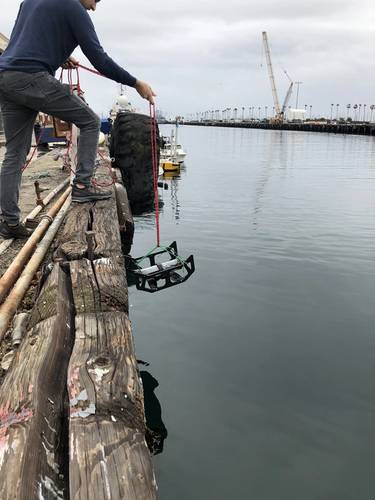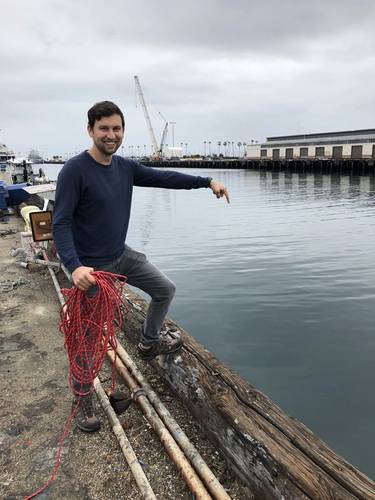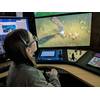MTR100: Rusty Jehangir, Founder, Blue Robotics
Rusty Jehangir founded Blue Robotics in 2014 in his garage, using Costco foldable tables as a work bench to build his first 600 thrusters, starting with just north of $100K in Kickstarter funding. Following eight years of rapid growth and expansion, Jehangir’s facilities and support has changed mightily, but his mission remains the same: design, manufacture and deliver low-cost subsea robotics for multiple markets.
The numbers tell part if not all of the story, as in just over eight years the company has sold more than 70,000 thrusters, more than 3,200 BlueROV2 vehicles supported by an internal team of 58 employees and 50 distributors globally.
“From day one, our mission was to make low-cost enabling parts for marine robotics, starting with the thruster and that's still our mission today,” said Jehangir in a recent interview with Marine Technology TV. “We have a lot more products now; around 280 total products in our online store, but they're all geared towards enabling marine robotics with low-cost, accessible, well-documented, easy-to-use products.”
While the growth has been fast, Blue Robotics has endured its fair share of hurdles. “On the technical front, and this seems embarrassing to say for a marine robotics company, but I think the most difficult technical thing is to keep things dry and to keep them low-cost,” said Jehangir. “There are a lot of ways to do that with expensive products, but doing it at a very low-cost price point is difficult.”
Blue Robotics used “potted penetrators”, basically epoxy around a cable through a bolt to seal a cable from the water, for a number of years, and Jehangir said they worked great until customers started pushing the products harder, resulting in reliability and consistency issues.
“One of our biggest technical achievements in the last year is coming up with the WetLink penetrator, a compression gland sealed cable penetrator. We think that problem is solved now for us, but it was an ordeal to get there,” said Jehangir.
Another problem common in start-ups across industries is the business side, particularly determining exactly what type of company you want, or need, to build. For example, Jehangir designed and sold 600 thrusters off of his prototype to start, but had no experience with contract manufacturer or building them efficiently, in mass, himself.
“I thought I had started a marine robotics company, and didn't realize I had started a manufacturing company at the same time,” he said. “I think it was probably three or four years in before we realized that that's really what we are. We're a manufacturing company and we need to be really good at it. So we've gone through a lot of growth internally to become good at manufacturing.”
Part of the Blue Robotics plan is to make products that are low cost, high quality and flexible.
“You don't have to buy a whole ROV to get a thruster. You can just buy a thruster or a watertight enclosure or a WetLink Penetrator and those components are not designed for one specific application. They're not designed for our BlueROV2. They're designed to be used in lots of different applications,” said Jehangir.
This, in turn, opens up the market to include everything from middle school students building ROVs for the MATE competitions to artists making robotic swans to make light shows to the most discriminating and demanding clients, such as WHOI.
While Jehangir is focused on building his business, he’s also intent on helping to build collaboration within the ocean exploration community, sharing details on interesting products and the projects for which they’re used. And as the industry is built successfully on new generations of innovators, he offers this advice for anyone seeking to take the marine robotics plunge: “I think the way to ensure that you're successful is to find a hole in the market. Not to look where other people are competing and try to compete against them, but to look where nobody's competing, where it's just wide open. For us, that was our initial thruster. There's the $30 bilge pump motor or there's the military-grade thruster, and there's this wide open gap in the middle. I think a large part of our success is just choosing the right market to be in and pursuing something that filled a market need.”
- Rusty Jehangir and Blue Robotics were featured in the September/October 17th annual "MTR100" edition of Marine Technology Reporter
- For the full interview with Jehangir, watch the video below.







![Microplastic beads seen in the central tube of a copepod [their intestinal tract], as evidenced here, fluorescently labelled beads help with visualization and identification. © PML](https://images.marinetechnologynews.com/images/maritime/w100h100padcanvas/microplastic-beads-seen-166795.jpeg)









 December 2025
December 2025



